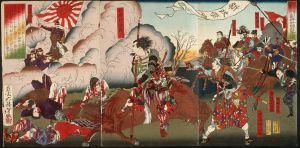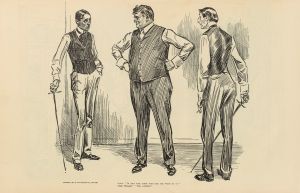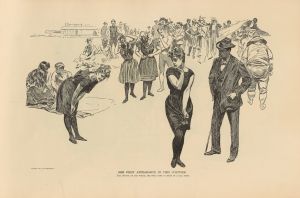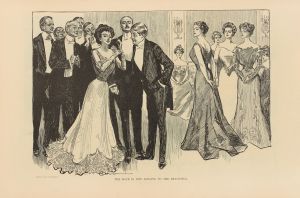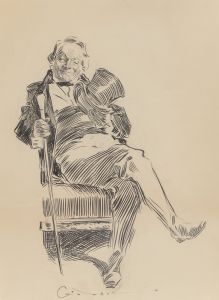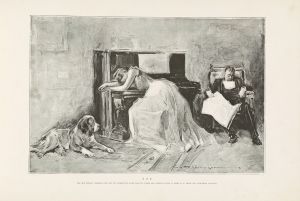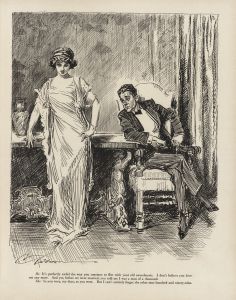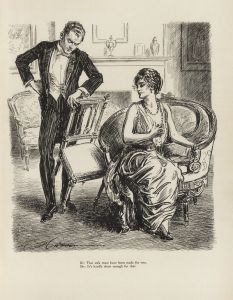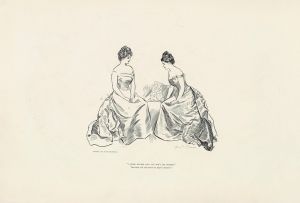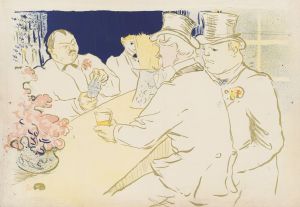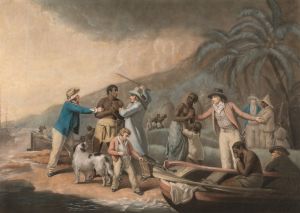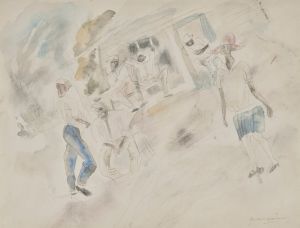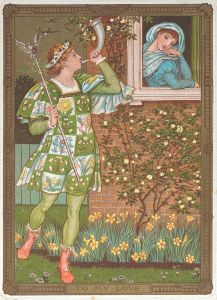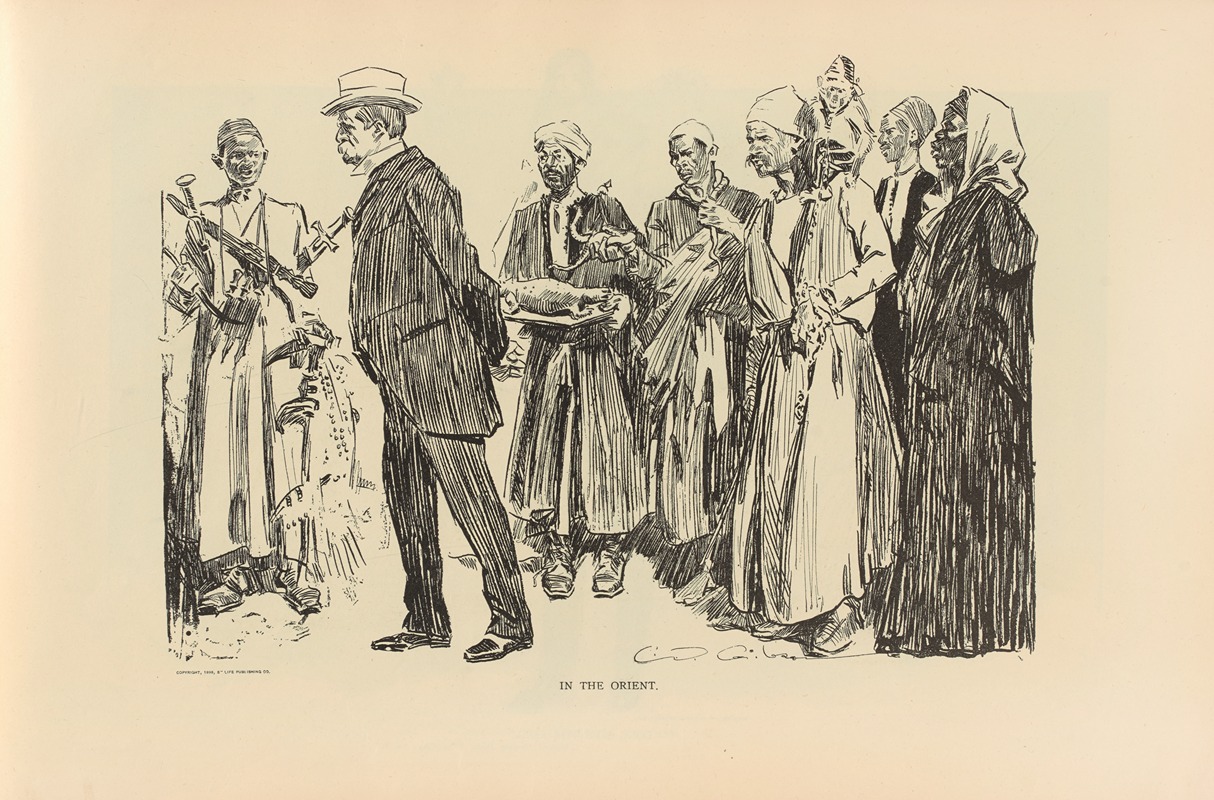
In the orient
A hand-painted replica of Charles Dana Gibson’s masterpiece In the orient, meticulously crafted by professional artists to capture the true essence of the original. Each piece is created with museum-quality canvas and rare mineral pigments, carefully painted by experienced artists with delicate brushstrokes and rich, layered colors to perfectly recreate the texture of the original artwork. Unlike machine-printed reproductions, this hand-painted version brings the painting to life, infused with the artist’s emotions and skill in every stroke. Whether for personal collection or home decoration, it instantly elevates the artistic atmosphere of any space.
Charles Dana Gibson, an American illustrator best known for his creation of the "Gibson Girl," produced a wide range of works during his career, including the illustration titled In the Orient. This piece is one of Gibson's many pen-and-ink drawings, showcasing his signature style of detailed line work and expressive characters.
In the Orient reflects Gibson's interest in depicting scenes that captured the imagination of his audience during the late 19th and early 20th centuries. The title suggests an engagement with themes or settings inspired by the "Orient," a term historically used in Western art and literature to refer to regions of Asia and the Middle East. However, like many works of the period, it is important to note that such depictions were often shaped by Western perceptions and stereotypes rather than accurate representations of the cultures they portrayed.
Gibson's work, including In the Orient, was typically published in popular magazines such as Life, Scribner's, and Harper's Weekly. These publications were instrumental in disseminating his illustrations to a broad audience, solidifying his reputation as one of the leading illustrators of his time. His drawings often combined humor, social commentary, and a keen observation of human behavior, which resonated with the public.
While specific details about the context or inspiration behind In the Orient are not widely documented, the piece is consistent with Gibson's broader body of work, which frequently explored themes of culture, society, and identity through a Western lens. As with many of his illustrations, the work likely reflects the artistic and cultural attitudes of its era, offering insight into the ways in which the "Orient" was imagined and represented in American popular media.
Charles Dana Gibson's legacy endures as a pivotal figure in the history of American illustration, and his works, including In the Orient, continue to be studied for their artistic merit and cultural significance.





